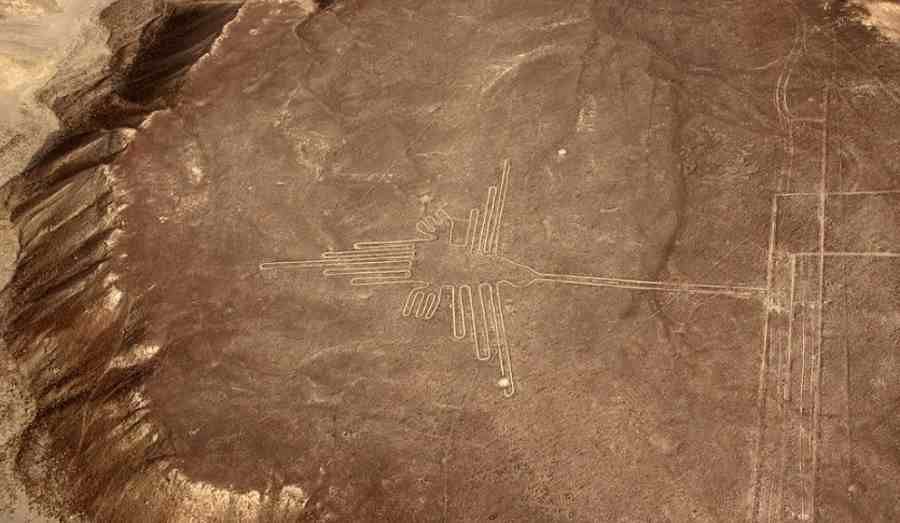New discoveries on the Nazca plateau. Previously unknown geoglyphs have been encountered

New discoveries on the Nazca plateau. Previously unknown geoglyphs have been encountered
Archaeologists in Peru have made a startling discovery. They have found more than 50 previously unknown geoglyphsow – reported „National Geographic”. The famous geoglyphs were created by the Nazca Indians. The researchers believe, however, that someore of newly discovered geoglyphsow and lines are many centuries older than the most famous of these magnificent drawingsoin and may be the work of representatives of the Pre-Inca Paracas culture, whichoers inhabited that area from about 800 – 500 p. n. e. up to 200 n. e.
Scientists believe that the Nazca Indians settled the area previously occupied by the Paracas culture itself. The presence of representatives of the Nazca culture is estimated to be between the 1st and 8th centuries n. e.
More than 2,000 years old, the terrestrial drawings located in a desert in southwestern Peru are the world’s best-known example of geoglyphsow. Huge geometric figures, the likenesses of monkeys, fish, spiderow and other animals up to hundreds of meters longow, they are visible in all their glory only after they rise into the air. There are hundreds of them on the Nazca plateau.
Lines, images of animals or geometric patterns have been the source for decadesodle of fascination. They were created by removing the top layer of red desert stones to reveal the pale layer beneath them. The geoglyphs extend over a vast area of the Nazca desert, between the towns of Nazca and Palpa.
Earlier geoglyphs created by the Paracas culture were located on the slopes of gor. It allowed to see them from the surface without having to take to the air. According to archaeologistow, drawings of the older culture much more often depict humans, as opposed to geometric shapesow and lines formed by the Nazca Indians.
– Our findings show that the formation of geoglyphsow is a tradition dating back more than a thousand years. The figures we have discovered predate the famous geoglyphs of the Nazca culture by several centuries, opening the door to new hypotheses about their function and significance – said „National Geographic” Johny Isla, an archaeologist with Peru’s Ministry of Culture, whoory is responsible for protecting geoglyphsow.
Luis Jaime Castillo Butters, professor of archaeology at the Pontifical Catholic University of Peru, along with Isla, teamed up with National Geographic Explorer archaeologist Sarah Parcak, whoora founded GlobalXplorer initiative. The initiative brings together and trains archaeologistsow-amateurow from around the world, whichohills with the help of satellitesow search for potentially interesting locations, archaeological sites or incidents of looting.
Teamoł professional archaeologistoIn armed with advanced equipment, he personally visited some of theore of the locations indicated in the project. Thusob dozens of previously unknown geoglyphs have been discoveredoin, whichore can be seen below in a recording made by "National Geographic".
– Most of these figures are warriors. The drawings were visible from the surface, but eroded over time and became invisible – explained Castillo Butters.
Scientists also pointed out the existence of yet another culture, ktora roIt also formed geoglyphs. This so-called. Topar cultureá. However, little is known about it. The researchers placed it in the time frame between the Paracas and Nazca cultures.
But how could such huge geoglyphs hide from human sight? Over time, many lines and figures have been reduced to light depressions in the soil. Despite powerful capabilities, satellites can’t see everything. The works of ancient cultures were revealed on the trojdimensional scans of the area made by drones. The equipment installed on them is extremely sensitive.
The geoglyphs were discovered in 1926. They were originally taken for irrigation systems. Then for sacred paths of a religious nature, but actually wspomodern science does not know for what purpose they were created.
There are several concepts. SomeoThe scholars believe that these are trail systemsoin commercial. Still others, that these are the types of pitches on whichor which sports competitions were held. There are also concepts, whichore moties that they are an ornament, whichora was to please the eyes of the godow. Others emphasize their connection with astronomical observations, as someore of the geoglyphsoin reflect the constellations.
However, the leading thesis is the one proposed by German researcher Marie Reiche. According to her, the Nazca drawings were used to determine the date of seedingow and a collection ofow. This is because they indicate points of easternoin and westoin the sun during the autumn and spring rownonoc and the summer solstice.




